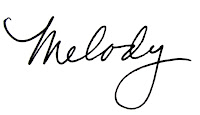Here is one that was knit straight up the back, saving the bottom, sides and ribbing til later. I cast on, did the whole back up to the shoulder and neck, put the neck stitches on hold, and attached a second skein for the second shoulder and knit down to the bottom of the neckline.



This is the inside view, so you can see where the neckline was ended on the front. I cast on stitches again in the middle and joined the other shoulder onto one needle and continued down the rest of the front.
Then I picked up stitches along the entire length of one side and knit out sideways until I reached half of my desired width. I did the same for the other side and then did a three needle bind off to connect the back and front, from the bottom edge to the bottom edge of the armhole. From there I just did some ribbing to finish off the armhole. I finished it all by picking up stitches at the bottom hem for the final ribbing. NO SEAMS ANYWHERE.
I especially wanted to show you the neck ribbing, because this is very much like what the armhole (!) would look like if you knit the Easy Way sweater in the round. Are you following me? If you knit the Easy Way sweater's back and front in the round from the bottom up, bound off stitches for the armhole (or put them on waste yarn), you would have a square edged 90 degree armhole opening. One would assume you couldn't achieve a nice round armhole from that shape, but here it is nicely curved, from exactly that 90 degree opening. Get it?
 Another way to do the armhole/sleeve is from a completely straight edged start. You might pick up just a few less stitches at the bottom edge of the sleeve-start to avoid bulk, or not.
Another way to do the armhole/sleeve is from a completely straight edged start. You might pick up just a few less stitches at the bottom edge of the sleeve-start to avoid bulk, or not. What we are avoiding is a thick shoulder seam, or setting in sleeves, which I really hate doing. The set in sleeve usually is shaped with lots of decreases spaced with rows in between, and results in a curved cap. I think this design stems from knits that are made with very fine yarns and are fashioned like a woven garment. I don't find that kind of sleeve shaping is necessary with dk or worsted weight yarns which have more spring and tend to conform to the body shape.
Of course top down raglan construction is another way to avoid all that shaping, but with raglan there are zillions of increased stitches repeated in a regular fashion, making it much much easier to knit.
Another top down approach is the round yoke, with regular increases until the armhole area is reached, and then those stitches are put on hold while the body is knit in the round. Later the armhole/sleeve is knit, usually in the round too. My recent 'discovery' of knitting sleeves in the round with two circular needles has made sleeve knitting so much easier. To refresh your memory: put half the sleeve stitches on needle one, and the other half on needle two. Pick up needle one and with its other end, knit all the stitches on that needle. Drop needle one and pick up needle two, the other half of the sleeve, and knit all those stitches. You will end up at the beginning of needle one again. Repeat. I usually decrease if necessary on the underside where the two needles meet.
In conclusion, this knitalong attempts to help you get past the dictates of any specific pattern and allows you to jump right into a project with the tools to achieve the garment and FIT you desire.
I hope this helps.




Did you knit this while we were sleeping?
ReplyDelete